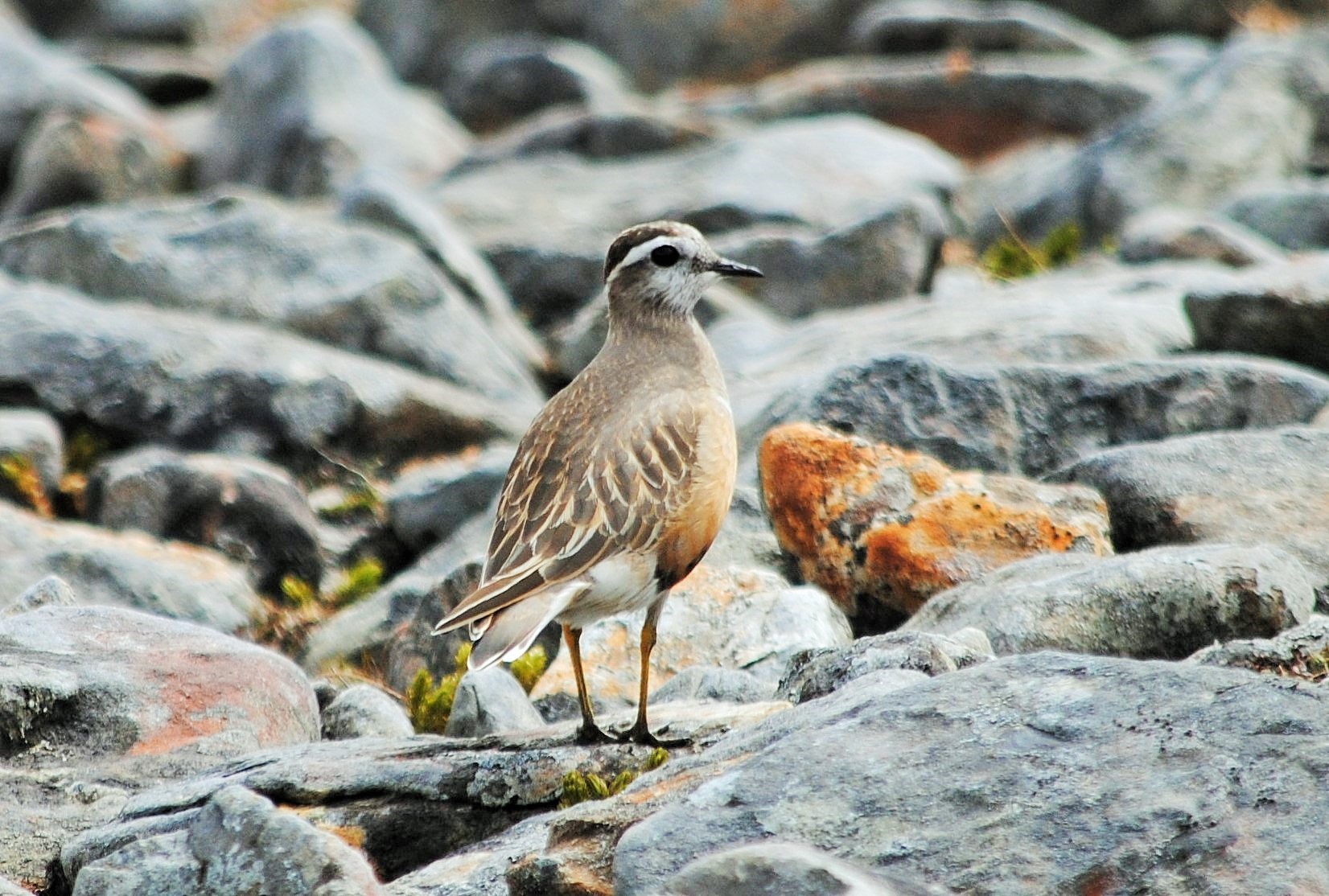It may be over 3,000ft and classed as a Munro but Tom Buidhe above Glen Doll is a most unspectacular looking mountain top; in truth a raised hillock in the middle of the high plateau that stretches from Glen Clova towards Glenshee.
But I like underdogs and Tom Buidhe and the surrounding high ground is an area I return to year after year. The thrill for me is the remoteness of this sub-Arctic landscape and the very special animals and plants that live here. So, with a day at the end of May promising fair, the draw of the high ground proved simply irresistible.
It was a sunny start and after climbing my favoured Tom Buidhe, I worked my way towards a nearby top called Tolmount. Soon, I spotted a movement amongst the rocks. A dotterel! Despite its colourful plumage, this dotterel blended in well within the stark landscape and it took me a few seconds to relocate the bird again through my binoculars.
The dotterel was content to keep still, probably in the hope I hadn’t seen it, which gave me time to take some photographs and admire that quite stunning colour, in particular the distinctive orange lower breast that shades into black.
They are such confiding little plovers, which certainly adds to their appeal. They are also rare breeders in Scotland, with the core population centred on the Cairngorms and adjacent high tops. This one was relatively pale in coloration, which made me think it was a male.
Most unusually, dotterels exhibit sexual role reversal, with the males largely responsible for looking after the eggs and young. The slightly larger and brighter plumaged female also takes the lead in courtship. Once she has laid her eggs in a shallow scrape in the ground, she’ll leave the male to get on with things and will even go and search out another mate, laying more than one clutch during the breeding season.
I watched this dotterel for a while longer before moving on towards the summit of Cairn of Claise. On a small grassy knoll I spotted a dunlin, a rather diminutive brown wader that sports a most distinctive black underbelly.
Seconds later, a peeping noise came from the other direction and two sharp-winged birds flew low past me before alighting on the ground. They were golden plovers and in the sunshine their backs really did look like burnished gold. It was a breeding pair, the male in particular so handsome with his jet black face and underparts.
But I had come to Cairn of Claise to see another upland speciality, as I knew from past experience that this boulder-strewn top is a reliable place to find ptarmigan. Unfortunately, they proved elusive but as I headed for home, two smoky-furred mountain hares lolloped away over a crest. It is such a descriptive word lollop, and one which so perfectly depicts the lazy bounding motion of these hares.
Info
Dotterel are scarce summer visitors to the high mountain plateaux of Scotland. They generally leave their breeding grounds by August and spend the winter in North Africa and the Middle East.










